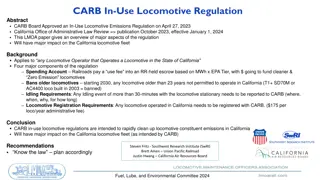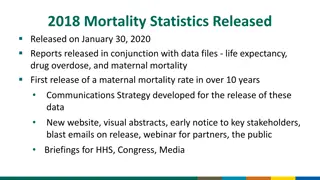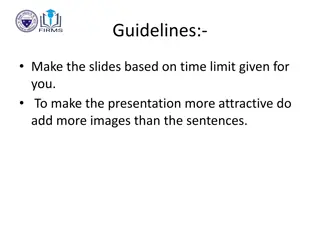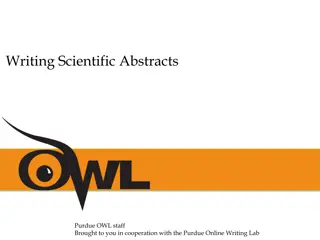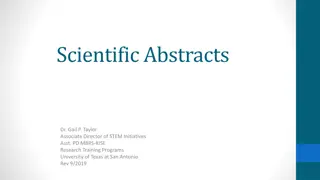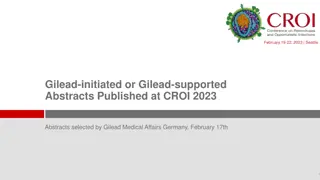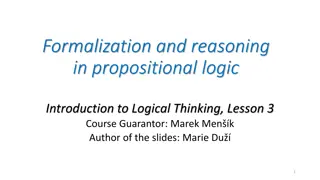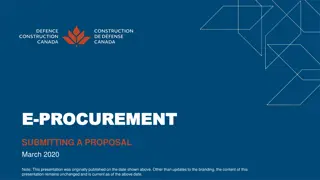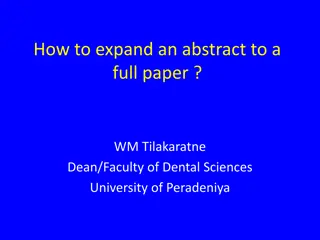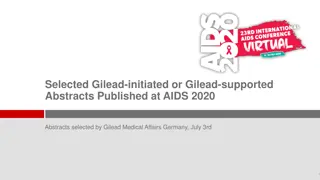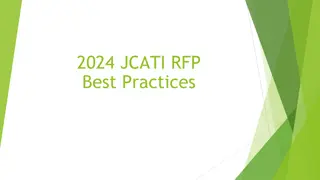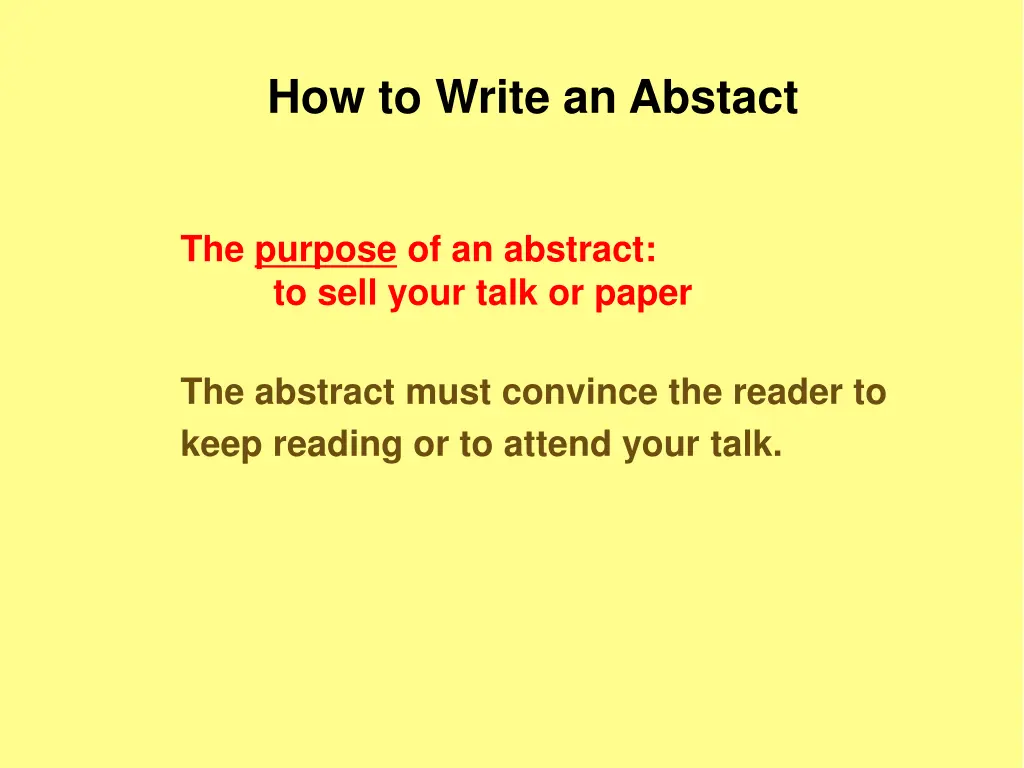
Crafting an Effective Abstract: Key Components and Structure
Learn how to write a compelling abstract that captivates your audience and entices them to engage further with your work. Understand the critical elements of motivation, problem statement, approach, results, conclusions, and the big picture in crafting an impactful abstract that showcases your research effectively.
Download Presentation

Please find below an Image/Link to download the presentation.
The content on the website is provided AS IS for your information and personal use only. It may not be sold, licensed, or shared on other websites without obtaining consent from the author. If you encounter any issues during the download, it is possible that the publisher has removed the file from their server.
You are allowed to download the files provided on this website for personal or commercial use, subject to the condition that they are used lawfully. All files are the property of their respective owners.
The content on the website is provided AS IS for your information and personal use only. It may not be sold, licensed, or shared on other websites without obtaining consent from the author.
E N D
Presentation Transcript
How to Write an Abstact The purpose of an abstract: to sell your talk or paper The abstract must convince the reader to keep reading or to attend your talk.
Parts of an Abstract: Each should be 1-2 sentences 1. Motivation: Why do we care about this topic or problem This section should mention: the importance of the work the challenges to further advancement the work s impact if successful
Parts of an Abstract: Each should be 1-2 sentences 2. Problem Statement What problem are you trying to solve? What is the scope of your work? (a specific situation or general approach?) Be careful not to use too much jargon. The problem might come before motivation (if the problem is obviously important)
Parts of an Abstract: Each should be 1-2 sentences 3. Approach What did you do to solve the problem? Did you develop new methods or models, or collect new data? What is the extent of your work? (which factors did you consider and which did you ignore?)
Parts of an Abstract: Each should be 1-2 sentences 4. Results What is the answer? Be as quantitative as possible (avoid very , small , significant ) Be careful not to let your numbers/results become misinterpreted (the abstract might becomes a permanent record of your work!)
Parts of an Abstract: Each should be 1-2 sentences 5. Conclusions What are the implications of your answer? Are your results generally applicable, or only in particular cases? What other studies are affected by your work?
Parts of an Abstract: 1. Motivation 2. Problem 3. Approach 4. Results 5. Conclusions Big Picture Specific to your study Return to Big Picture
More to Consider 1. Title: Should be clear and informative, while containing all the key information 2. Meet the word count limitation (use all the space) 3. References: Use only if your work specifically addresses results from a previous paper 4. Never say results of the study will be discussed
Keywords / Key-phrases 1. Think of ~6 keywords or phrases and make sure they appear in your abstract. 2. Computers search on words, so you want to make sure your abstract shows up 3. Keywords are used for index searches (and to assign reviewers)
Assignment for Next Week 1. Read all four papers: Abrupt Climate Change (by Alley) Ocean Acidification (by Doney) Sculpting the Earth from the Inside Out (by Gurnis) Snowball Earth (by Hoffman & Schrag) 2. Write an abstract for one paper with your group (200 word limit). 3. e-mail me your group abstract by Thursday Noon. 4. We will discuss the abstracts next week.

